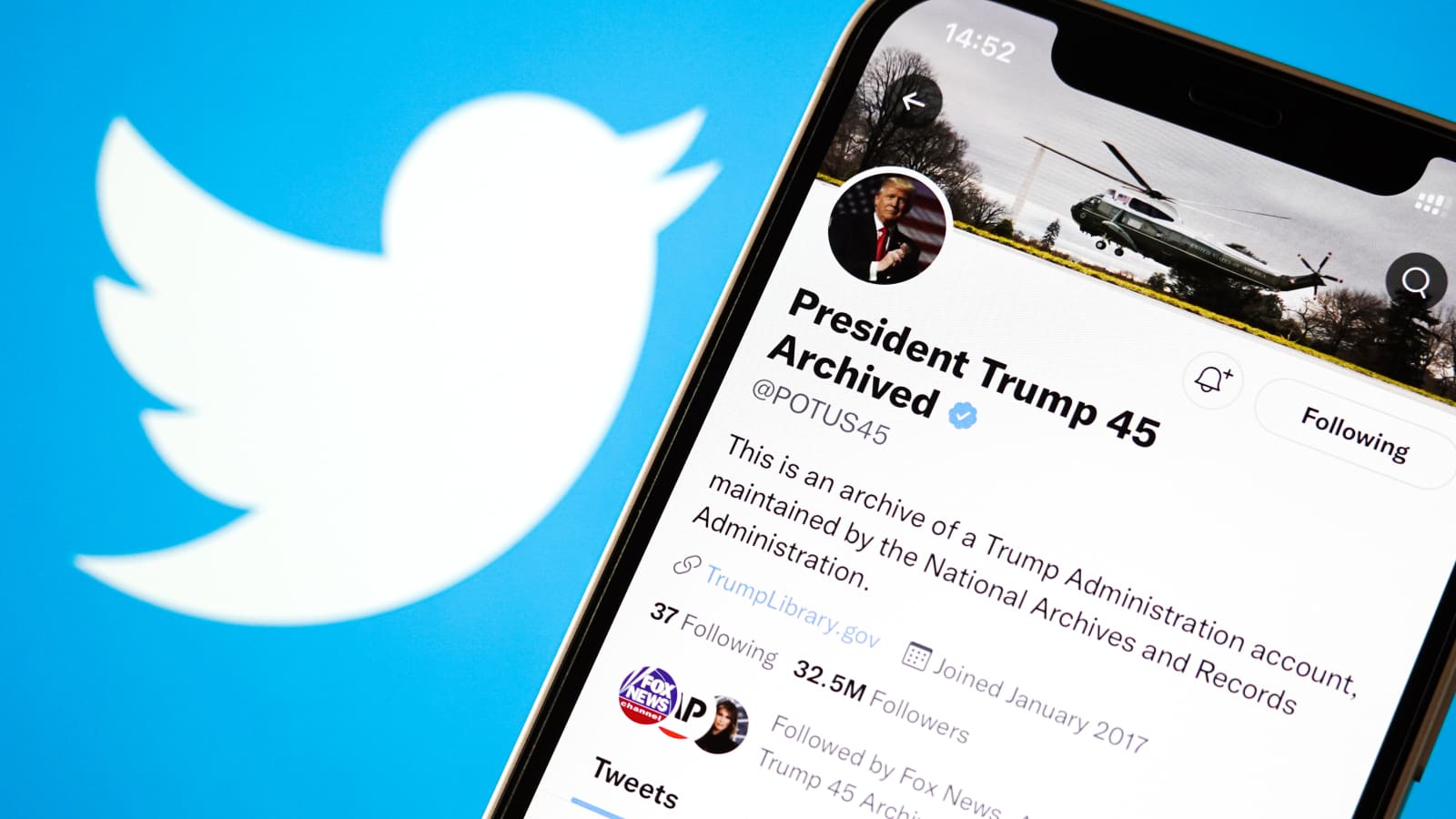Understanding Twitter Shadow Ban
Twitter shadow ban refers to the practice of limiting the visibility of a user's tweets without explicitly notifying them. It originated as a way to moderate user behavior on online forums and has since been adopted by social media platforms like Twitter. This blog post aims to provide a comprehensive guide on how to identify shadow banning, monitor tweet reach, analyze its impact, and explore future trends in this area. By understanding the concept of shadow banning and its implications, users can take control of their online presence and maximize their visibility on the platform.
Identifying if Your Account is Shadow Banned
When it comes to identifying if your Twitter account has been shadow banned, there are several key indicators to look out for.
Reduced Visibility of Tweets
One of the main signs of a shadow ban is when your tweets no longer appear in search results or hashtag feeds. This means that even if you use relevant hashtags or keywords, your tweets won't show up when other users search for those terms. Additionally, other users may not see your tweets in their timeline, reducing the chances of engagement and reach.
Lack of Notifications or Alerts
Another telltale sign of being shadow banned is the lack of notifications or alerts for likes, retweets, or mentions. Typically, when someone interacts with your tweet, you receive a notification. However, if you're shadow banned, these notifications may stop coming through. Moreover, your tweets may not show up in the notifications of other users who follow you.
Effects on Engagement Metrics
Shadow banning can have a significant impact on your engagement metrics. You may notice a decrease in likes, retweets, and replies compared to what you were previously experiencing. This decline in engagement can be frustrating and affect the overall visibility and reach of your tweets.
By keeping an eye out for these signs and monitoring changes in visibility and engagement metrics, you can determine whether your account has been shadow banned. In the next section, we will explore different methods to monitor tweet reach and engagement to gain further insights into the potential shadow ban on your account.
Monitoring Tweet Reach and Engagement
To effectively monitor your tweet reach and engagement and determine if your account is shadow banned, there are a few methods you can employ.
Using Shadow Ban Checkers
Several online tools are available that can help you determine if your Twitter account is shadow banned. These tools analyze your recent tweets and provide insights on their visibility. By inputting your Twitter handle or specific tweet URLs into these tools, you can receive an analysis of whether your tweets are being limited in reach. Keep in mind that while these tools can provide valuable information, they may not be 100% accurate due to the ever-evolving nature of social media algorithms.
Testing with a Second Account
Another method to monitor potential shadow banning is by creating a separate Twitter account and checking if your tweets appear in its timeline. This involves following your main account from the second account and comparing the visibility of your tweets between the two accounts. If you notice significant differences in tweet visibility, it could indicate that your main account is indeed shadow banned.
By utilizing shadow ban checkers and testing with a second account, you can gain insights into the reach and engagement of your tweets. These monitoring techniques will help you identify any potential shadow banning issues and allow you to take appropriate action to maximize the visibility of your content. In the next section, we will explore how to analyze the impact of shadow banning on your social media strategy.
Analyzing the Impact on Social Media Strategy
Once you have identified that your account is shadow banned, it's essential to analyze the impact on your social media strategy and make necessary adjustments.
Understanding Audience Reach
Shadow banning can significantly limit the number of users who see your tweets. It's crucial to evaluate the impact this has on your target audience. Take a closer look at your analytics and compare the reach of your tweets before and after the suspected shadow ban. This will help you understand how many potential viewers you are missing out on. Based on this evaluation, consider adjusting your content strategy to ensure maximum visibility among your intended audience.
Assessing Engagement Levels
Another key aspect to analyze is the engagement levels of your tweets. Monitor changes in likes, retweets, and replies to gauge the impact of shadow banning on user interaction with your content. If you notice a significant decrease in engagement metrics, it may be necessary to explore alternative methods to engage your audience effectively. Experiment with different types of content, such as videos or interactive polls, and actively encourage participation from your followers.
Reviewing Content and Behavior
As part of analyzing the impact of shadow banning, it's important to review both your tweet content and overall account behavior. Analyze your tweets for potential reasons why they might have triggered a shadow ban. Ensure compliance with Twitter's guidelines by avoiding spammy or abusive behavior that could lead to reduced visibility. By maintaining a high-quality standard for your tweets and adhering to best practices, you can minimize the risk of being shadow banned in the future.
By carefully analyzing the impact of shadow banning on various aspects of your social media strategy, you can make informed decisions about how to adapt and optimize your approach going forward. In the next section, we will discuss future trends related to Twitter shadow bans and ongoing debates surrounding this practice.
Future Trends and Ongoing Debate
The practice of shadow banning on social media platforms like Twitter has sparked ongoing debates and discussions. As the landscape continues to evolve, several future trends are emerging.
Increased Transparency from Social Media Platforms
Users and experts advocate for more transparency regarding shadow banning. There is a growing demand for social media platforms to provide clearer guidelines and notifications when an account is shadow banned. By increasing transparency, users can have a better understanding of the platform's policies and take appropriate actions to avoid being penalized.
Development of Sophisticated Shadow Ban Detection Tools
Technological advancements are likely to lead to the development of more accurate and efficient shadow ban detection tools. These tools could provide detailed insights into the visibility of tweets, allowing users to proactively monitor their accounts for any signs of shadow banning. With improved detection capabilities, individuals can take immediate action to rectify any issues and maintain their online presence.
Continued Debate on Ethics and Impact
The practice of shadow banning remains controversial, with ongoing debates surrounding its ethics and impact. Critics argue that it infringes upon free speech rights by limiting the reach of certain individuals or ideas. Others express concerns about potential platform manipulation through selective visibility. The debate revolves around finding a balance between moderating content and ensuring fair treatment for all users.
Potential Regulations or Guidelines
In response to these concerns, regulatory bodies may introduce guidelines or regulations to address shadow banning practices. The aim is to ensure fair and transparent social media practices that do not unduly restrict user visibility or engagement. These measures would provide a framework for platforms to follow while maintaining user trust in their services.
As future trends continue to shape the landscape of shadow banning, it is important for users, social media platforms, and regulatory bodies to engage in open dialogue and work towards solutions that promote fairness, transparency, and freedom of expression. In the final section of this blog post, we will summarize the key points discussed and provide a conclusion.
Conclusion
In conclusion, Twitter shadow banning can significantly impact the visibility and engagement of your tweets. It is important to actively monitor your tweet reach and engagement to identify any signs of shadow banning. By using shadow ban checkers and testing with a second account, you can gain insights into the visibility of your tweets. Analyzing the impact on your social media strategy allows you to make necessary adjustments to maximize your online presence. As future trends emerge, increased transparency from social media platforms and the development of sophisticated detection tools may provide users with more control over their visibility on the platform. Stay vigilant and adapt your strategies accordingly to ensure maximum reach and engagement on Twitter.



